Sean Bienvenidos, Japonistasarqueologicos A Una Nueva Entrega Sintética, En La Cual Mencionaremos Una







Sean Bienvenidos, japonistasarqueologicos a una nueva entrega sintética, en la cual mencionaremos una de las muchas obras de Hiroshige, del cual ya hablamos en una publicación, pero no publique ninguna obra, ahora llego el momento dicho esto pónganse cómodos que empezamos. - Características Año: 1852 - 1858 Título: Itsukushima in Aki Province. Estilo: Ukiyo-e - Espero que os haya gustado os deseo una feliz semana y nos vemos en próximas publicaciones de Japón. - ようこそ、ジャポニスタサルケオロジコスの新しい合成配信へ。その中で、広重の多くの作品の一つを紹介します。その作品については、すでに出版物で話していますが、私は作品を出版していません。今、その時が来ました。そう言って、あなた自身を快適にして、始めましょう。 - 特徴 年:1852年~1858年 タイトル:安芸国厳島(あきこくいつくしま 様式:浮世絵 - お気に召していただけたなら幸いです。今週もよろしくお願いします。また、今後の日本の出版物でお会いしましょう。 - Welcome, japonistasarqueologicos to a new synthetic delivery, in which we will mention one of the many works of Hiroshige, of which we already spoke in a publication, but I did not publish any work, now the time has come, having said that, make yourselves comfortable and let's begin. - Features Year: 1852 - 1858 Title: Itsukushima in Aki Province. Style: Ukiyo-e - I hope you liked it, I wish you a happy week and see you in future Japan publications.
More Posts from Noticiasarquelogicasjaponesas and Others




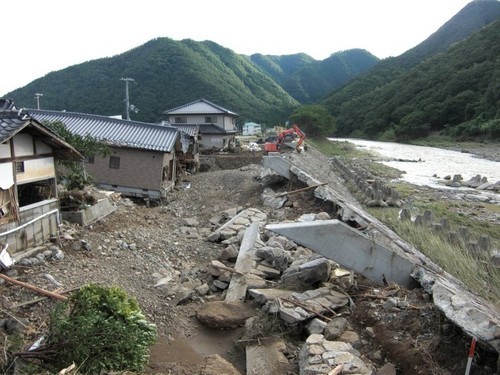
Sean bienvenidos, japonistasarqueológicos a una nueva entrega, en esta ocasión hablaré sobre actualidad nipona, una vez dicho esto pónganse cómodos que empezamos. — El domingo 16 de julio, azotaron fuertes lluvias al archipiélago nipón y hace no mucho el tifón Lan paralizó el tráfico aéreo de Japón y dejó miles de evacuados al oeste, además sin electricidad. Pero en este caso se han anegado muchas zonas del norte, causando efectos geográficos catastróficos y causando evacuaciones, etc. Por ejemplo: La ciudad de Akita registró precipitaciones, fue un récord, más de 250 milímetros durante un período de 48 horas, todo un hito histórico. — Espero que os guste y nos vemos en próximas publicaciones, que pasen una buena semana. - Welcome, Japanese archaeologists, to a new installment, this time I will be talking about Japanese current affairs, and once that is said, make yourselves comfortable and let's get started. - On Sunday 16th July, heavy rains hit the Japanese archipelago and not long ago Typhoon Lan paralysed Japan's air traffic and left thousands of evacuees in the west without electricity. But in this case many areas in the north have been flooded, causing catastrophic geographical effects and causing evacuations, etc. For example: The city of Akita recorded record rainfall of more than 250 millimetres over a 48-hour period, a historic milestone. - I hope you like it and see you in future posts, have a good week. - 日本の考古学者たちよ、新しい回へようこそ。今回は日本の時事問題についてお話しします。そう言ったら、くつろいで、始めましょう。 - 7月16日の日曜日、日本列島は大雨に見舞われ、少し前には台風12号が日本の空の便を麻痺させ、西日本では何千人もの避難者が停電に見舞われた。しかし今回は、北部の多くの地域が浸水し、地理的に壊滅的な影響を引き起こし、避難などを余儀なくされている。例えば:秋田市では、48時間に250ミリ以上の記録的な雨量を記録し、歴史的な出来事となった。 - お気に召していただけたなら幸いである.



Sean bienvenidos fanáticosjaponesitas a una nueva entrega de Arqueología, en esta ocasión hablaremos de uno de los mayores monumentos del mundo asiático que se localiza en la ciudad de Nara, prefectura de Honshu. - Dicho esto, pónganse cómodos que comenzamos, tengo el placer de presentaros al templo budista Todaiji, es uno de los más grandes y data de los años: (710-784) después de nuestra era. El día 15/4/2022 tuve el placer de enterarme de que se habían encontrado restos de un líquido localizado en la pared exterior del Gran Salón del Buda. - Dicho líquido alberga el rango de 70 cm a 80 cm de ancho de la pared, dicho acto me duele igual que un japonés, ya que esto es mancillar el buen nombre de la religión budista, siendo la segunda más procesada en todo el país tras el sintoísmo además siendo uno de los edificios más icónicos de japón. - La policía está investigando a través de las cámaras de seguridad, gracias al gamberro, que posiblemente sea un turista que no tiene ni idea de lo que está viendo. Consejo si van a visitar un monumento háganme él por favor de informarme previamente. - Un saludo, por la gloria del emperador y de Amaterasu, nos despedimos hasta una próxima publicación. - Japanese fans are welcome to a new installment of Archeology, this time we will talk about one of the largest monuments in the Asian world that is located in the city of Nara, Honshu prefecture. - That said, make yourself comfortable, let's begin, I have the pleasure of introducing you to the Todaiji Buddhist temple, it is one of the largest and dates from the years: (710-784) after our era. On 4/15/2022, I was pleased to learn that traces of a localized liquid had been found on the outer wall of the Great Buddha Hall. - Said liquid houses the range of 70 cm to 80 cm wide of the wall, said act hurts me just like a Japanese, since this is tarnishing the good name of the Buddhist religion, being the second most processed in the whole country after the shintoism also being one of the most iconic buildings in japan. - The police are investigating via security cameras, thanks to the thug, who is possibly a tourist who has no idea what he is seeing. Advice if you are going to visit a monument, please let me know beforehand. - A greeting, for the glory of the emperor and Amaterasu, we say goodbye until a next publication. - 日本のファンは考古学の新作を歓迎します。今回は、本州県奈良市にあるアジア世界最大のモニュメントの1つについてお話します。 - とはいえ、快適に過ごしましょう。まずは、東大寺を紹介できることをうれしく思います。東大寺は、私たちの時代からの最も大きな寺院の1つです。 2022年4月15日、大仏殿の外壁に局所的な液体の痕跡が見つかったことを知り、うれしく思いました。 - この液体は壁の幅70cmから80cmの範囲にあり、これは仏教の名を傷つけているので、日本人のように私を傷つけます。これは神道に次いで全国で2番目に処理されています。日本で最も象徴的な建物の1つです。 - 警察は、彼が何を見ているのかわからない観光客である可能性のある凶悪犯のおかげで、防犯カメラを介して調査しています。記念碑を訪れる場合のアドバイスは、事前にお知らせください。 - 天照大神と天照大神の栄光にご挨拶、次の出版までお別れを申し上げます。日本のファンは考古学の新作を歓迎します。今回は、本州県奈良市にあるアジア世界最大のモニュメントの1つについてお話します。 - とはいえ、快適に過ごしましょう。まずは、東大寺を紹介できることをうれしく思います。東大寺は、私たちの時代からの最も大きな寺院の1つです。 2022年4月15日、大仏殿の外壁に局所的な液体の痕跡が見つかったことを知り、うれしく思いました。 - この液体は壁の幅70cmから80cmの範囲にあり、これは仏教の名を傷つけているので、日本人のように私を傷つけます。これは神道に次いで全国で2番目に処理されています。日本で最も象徴的な建物の1つです。 - 警察は、彼が何を見ているのかわからない観光客である可能性のある凶悪犯のおかげで、防犯カメラを介して調査しています。記念碑を訪れる場合のアドバイスは、事前にお知らせください。 - 天照大神と天照大神の栄光にご挨拶、次の出版までお別れを申し上げます。

#history #archaeology #japan #blog #presentation
Sean bienvenidos, a una publicación de presentación, en este blog iremos subiendo contenido de Japón sobre arqueología, historia y cualquier cosita, espero que os guste y nos vemos pronto.
-
Welcome to an introductory post, in this blog we will be uploading content from Japan about archaeology, history and anything else, I hope you like it and see you soon.
-
このブログでは、考古学や歴史など、日本からのコンテンツをアップしていきます。





Sean bienvenidos, japonistasarqueologicos a una entrega de arquitectura japonesa una vez dicho esto pagase cómodos que empezamos. - Esta pagoda se localiza en Kyoto y data del siglo XV, a este tipo de pagodas se les llama Tahōtō, se caracteriza por tener solo dos plantas, las ventanas tienen forma de flor de loto, clara influencia de china y Korea. - Espero que os haya gustado y nos vemos en próximas publicaciones que pasen una buena semana. - ジャポニスタサルケオロギコスの皆さん、日本建築の配信へようこそ。そうは言っても、安心して始めてください。 - この塔は京都にあり、15 世紀に建てられました。このタイプの塔は多宝塔と呼ばれ、2 階しかないのが特徴で、窓は蓮の花の形をしており、明らかに中国と韓国の影響を受けています。 - 気に入っていただければ幸いです。今後の投稿でお会いしましょう。良い一週間をお過ごしください。 - Welcome, japonistasarqueológicos to a delivery of Japanese architecture, having said this, pay comfortable that we start. - This pagoda is located in Kyoto and dates from the 15th century, this type of pagoda is called Tahōtō, it is characterized by having only two floors, the windows are in the shape of a lotus flower, a clear influence from China and Korea. - I hope you liked it and see you in future posts, have a good week.

CAPÍTULO 1 INTRODUCTORIO: Sean bienvenidos japonistaarqueológicos, a una nueva entrega de la serie arqueológica de la ciudad de Matsumoto en la prefectura de Nagano, las ruinas que nos acompañarán a lo largo de estos tres capítulos son las ruinas de Weda¿Qué son estas ruinas? ¿De qué periodo tratan? ¿Dónde se localizan exactamente? Todas estas preguntas y más nos van a ir acompañando a lo largo de estas publicaciones pónganse cómodos que empezamos. - las ruinas las podemos localizar en el emplazamiento suroeste de la ciudad de Matsumoto en un abrigo aluvial ¿Qué dos ríos son lo que podemos localizar? ¿Cuáles son sus nombres? Los ríos se llaman Azusa y Kusari, la arqueología ha demostrado que no hubo asentamientos que continuarán desde los periodos Yayoi tardío y el periodo Kofun¿Cuándo empezaron a plantar arroz? Se estima que sería a finales del siglo VII d.c. - ¿Qué opinan ustedes al respecto? ¿Conocían el emplazamiento? Espero que os haya gustado, nos vemos en próximas publicaciones. 導入第 1 章: 長野県松本市の考古学シリーズの新作、ジャポニスタ考古学へようこそ、この3つの章でお供する遺跡は、ウェダ遺跡です.この遺跡は何ですか?彼らはどの時代についてですか?それらは正確にはどこにありますか?これらすべての質問とその他の質問は、これらの出版物全体で私たちに付随します。快適にして、始めましょう. - 松本市の南西部に位置する沖積シェルター内にある遺跡を見つけることができます.2つの川を見つけることができますか?それらの名称は何ですか?梓川と鎖川と呼ばれる川ですが、考古学的には弥生時代後期から古墳時代にかけて集落が続いていなかったことが考古学的にわかっていますが、田植えはいつ頃から始まったのでしょうか。 7世紀末頃と推定されています。 - あなたはそれについてどう思いますか?彼らは場所を知っていましたか?気に入っていただければ幸いです。今後の出版物でお会いしましょう。 - INTRODUCTORY CHAPTER 1: Welcome to japonistaarchaeological, to a new installment of the archaeological series of the city of Matsumoto in Nagano prefecture, the ruins that will accompany us throughout these three chapters are the Weda ruins. What are these ruins? What period are they about? Where exactly are they located? All these questions and more will accompany us throughout these publications, make yourself comfortable, let's start. - We can locate the ruins in the southwestern location of the city of Matsumoto in an alluvial shelter. What two rivers can we locate? What are their names? The rivers are called Azusa and Kusari, archeology has shown that there were no settlements to continue from the late Yayoi periods and Kofun period, when did they start planting rice? It is estimated that it would be at the end of the 7th century AD. - What do you think about it? Did they know the location? I hope you liked it, see you in future publications. ソース写真/source photo:https://naganomaibun.or.jp/research/east/和田遺跡・和田1号塚/
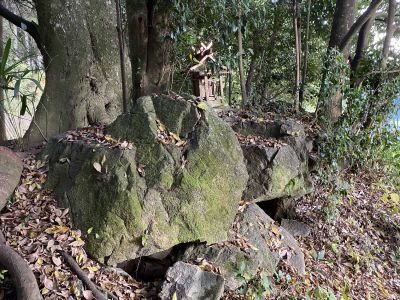


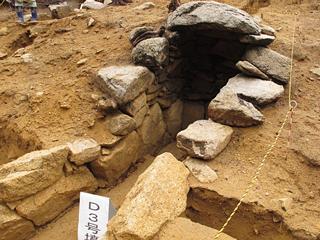

Sean bienvenidos, japonsistasarqueológicos, a una nueva entrega arqueológica, en esta ocasión os voy a hablar del túmulo Shofuku-ji una vez dicho esto, pónganse cómodos que empezamos. - ¿Dónde se localiza el túmulo Shofuku-ji? Se localiza en la ciudad de Kawanishi, en la prefectura de Hyōgo, localizado a su vez en la región de Kansai. La cámara funeraria se descubrió en la era Meiji. En 1934, el Dr. Sueharu Umehara de la Universidad de Kyoto realizó un estudio de campo y en la década de 1970, se realizó un estudio llevado a cabo por la Junta de Educación de la ciudad de Kawanishi que descubrió un ataúd de madera en la que se enterraron: puntas de flecha de hierro, espadas de hierro. - Data del siglo V y el siglo V y corresponde al periodo Kofun, con una longitud total de 40 m y fue construido a principios del siglo VI. Se descubrió un haniwa, que fue desenterrado durante la excavación, y se hizo de una manera muy similar al haniwa en la región de Owari que corresponde a la actual prefectura occidental de Aichi. - Espero que os haya gustado y nos vemos en próximas publicaciones, que pasen una buena semana. 日本の考古学者の皆さん、ようこそ!今回は、正福寺古墳についてお話します!では、早速始めましょう。 - 正福寺塚はどこにあるのですか?関西地方に位置する兵庫県川西市にあります。古墳が発見されたのは、明治時代です。1934年に京都大学の梅原末治博士が現地調査を行い、1970年代には川西市教育委員会の調査で木棺が発見され、その中に鉄鏃、鉄剣、鉄刀が埋められていました。 - 5~5世紀の古墳時代に相当し、全長40m、6世紀初頭に造られたものである。発掘調査で出土した埴輪は、現在の愛知県西部の尾張地方にある埴輪と酷似した作りのものが発見されています。
Welcome, Japanese archaeologists, to a new archaeological instalment, this time I am going to talk to you about the Shofuku-ji tumulus, having said that, make yourselves comfortable and let's get started. - Where is the Shofuku-ji mound located? It is located in the city of Kawanishi, Hyōgo Prefecture, located in the Kansai region. The burial chamber was discovered in the Meiji era. In 1934, Dr. Sueharu Umehara of Kyoto University conducted a field survey and in the 1970s, a survey conducted by the Kawanishi City Board of Education uncovered a wooden coffin in which were buried: iron arrowheads, iron swords, and iron swords. - It dates from the 5th-5th century and corresponds to the Kofun period, with a total length of 40 m and was built in the early 6th century. A haniwa, which was unearthed during excavation, was discovered and made in a very similar manner to the haniwa in the Owari region of what is now western Aichi Prefecture. - I hope you liked it and see you in future posts, have a nice week.


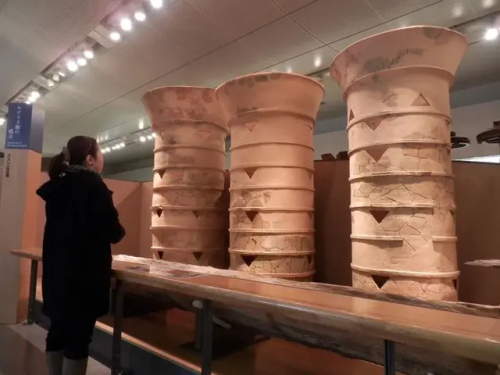

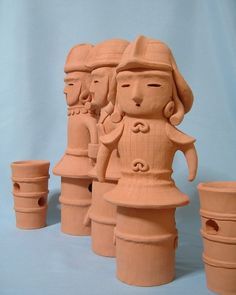
Sean bienvenidos japonistasarqueologicos a una nueva entrega de Arqueología Japonesa en esta ocasión nos trasladamos a la prehistoria japonesa dicho esto pónganse cómodos que empezamos. - Tengo el placer de presentaros a las esculturas Haniwa, ¿Qué significa este término?¿Cuándo surgió? Y ¿Cuál era su funciones? - Las primeras preguntas para este capítulo serán: ¿Cuándo surgió? Datan de los siglos VI y VII d.C Como ya comenté en varias ocasiones la cronología japonesa es difícil de entender para ojos occidentales ya que hay que verla con ojos orientales. - La segunda pregunta será ¿En donde podemos encontrar estas obras de arte?: La Podemos encontrar en multitud de lugares pero vengo a destacar uno en especial se trata de uno de los mejores juegos de Nintendo y su nombre es Atsumare Dōbutsu no Mori. - Espero que os haya gustado el capítulo 1 y nos vemos en los próximos capítulos de esta serie de historia y arqueología un cordial saludo.
-
日本考古学へようこそ。新しい日本考古学へ。今回は日本の先史時代に移ります。そうは言っても、気を楽にして始めましょう。
-
埴輪彫刻についてご紹介させていただきます。この言葉はいつ頃から生まれたのでしょうか?そしてその機能は何だったのでしょうか? - この章の最初の質問は次のとおりです。それはいつ出現しましたか?それらは西暦 6 世紀から 7 世紀のものです。 すでに何度か述べましたが、日本の年表は東洋の目で見なければならないため、西洋の目には理解しにくいものです。
-
2 番目の質問は次のとおりです。これらの芸術作品はどこで見つけることができますか?: さまざまな場所で見つけることができますが、特に 1 つを取り上げます。これは任天堂の最高のゲームの 1 つであり、その名前は「あつまれ どうぶつの森」です。
-
第 1 章を気に入っていただければ幸いです。この歴史と考古学シリーズの次の章でもお会いしましょう。
-
Welcome japonistasarqueologicos to a new installment of Japanese Archaeology. This time we move to Japanese prehistory. Having said that, make yourselves comfortable as we begin.
-
I have the pleasure of introducing you to the Haniwa sculptures. What does this term mean? When did it emerge? And what were its functions?
-
The first questions for this chapter will be: When did it emerge? They date back to the 6th and 7th centuries AD. As I have already mentioned on several occasions, Japanese chronology is difficult to understand for Western eyes since it must be seen with Eastern eyes.
-
The second question will be: Where can we find these works of art? We can find them in many places, but I am here to highlight one in particular. It is one of the best Nintendo games and its name is Atsumare Dōbutsu no Mori.
-
I hope you liked chapter 1 and I will see you in the next chapters of this series of history and archaeology. Best regards.

HISTORIA DE LA ARQUEOLOGÍA JAPONESA Y EL PENSAMIENTO CIENTÍFICO.
Capítulo 1: Sean bienvenidos, japonistasarqueológicos, a una nueva entrega de arqueología nipona, vista desde un punto de vista filosófico, una vez dicho esto pónganse cómodos qué empezamos. — Seguramente, todos nos hacemos las mismas preguntas cuando se nos pregunta determinados temas de historia y de arqueología. ¿Quiénes eran nuestros antepasados y por qué llegaron a este determinado lugar y no a x? ¿De qué medios disponían para lograr determinadas hazañas históricas? En nuestro caso nos centraremos en dos preguntas determinadas ¿Quiénes fueron los primeros pobladores del archipiélago japonés? Y de ver cómo dicha idea ha llegado a nuestros días sin una respuesta clara, ya que tanto arqueólogos, historiadores, antropólogos, entre otros, han intentado dar una posible respuesta a una de las mayores incógnitas de la historia de la arqueología japonesa. — ¿Cuándo surgió la arqueología japonesa propiamente dicha? La historia de Japón es un tanto complicada, debido a que la ciencia propiamente dicha no nace hasta finales del siglo XIX, para ser más exactos 12 de abril 1877 ¿Cuándo surgen las sociedades arqueológicas, antropológicas y el laboratorio de antropología en Tokio? Además, tuvieron mucha influencia de gente tanto de Europa como de Estados Unidos, ya que tenían una gran influencia para aquel momento y mencionaremos algunos y a uno de los arqueólogos más destacados del mundo japonés. — ¿Cuándo surgen las sociedades arqueológicas, antropológicas y el laboratorio de antropología en Tokio? Para responder a dicha pregunta: A partir de 1880,vino un proceso gradual de institucionalización a la arqueología, generando un nuevo marco académico y universitario: Dando lugar al nacimiento de la Sociedad Antropológica de Tōkyō 1884, se creó el Laboratorio de Antropología en la Universidad de Tōkyō 1888,la fundación de la Sociedad Arqueológica se fundó en Japón en 1895. — Espero que os haya gustado y nos vemos en próximas publicaciones que pasen una buena semana.
HISTORY OF JAPANESE ARCHEOLOGY AND SCIENTIFIC THOUGHT.
Chapter 1: Welcome, Japanesearchaeologicalists, to a new installment of Japanese archaeology, seen from a philosophical point of view. Having said that, get comfortable and let's begin. — Surely, we all ask ourselves the same questions when we are asked certain topics in history and archeology. Who were our ancestors and why did they arrive at this certain place and not x? What means did they have to achieve certain historical feats? In our case we will focus on two specific questions: Who were the first settlers of the Japanese archipelago? And to see how this idea has reached our days without a clear answer, since archaeologists, historians, anthropologists, among others, have tried to give a possible answer to one of the biggest unknowns in the history of Japanese archaeology. — When did Japanese archeology itself emerge? The history of Japan is somewhat complicated, because science itself was not born until the end of the 19th century, to be more exact April 12, 1877 When did the archaeological and anthropological societies and the anthropology laboratory emerge in Tokyo? In addition, they had a lot of influence from people from both Europe and the United States, since they had a great influence at that time and we will mention some of them and one of the most prominent archaeologists in the Japanese world. — When did the archaeological and anthropological societies and the anthropology laboratory emerge in Tokyo? To answer this question: Starting in 1880, a gradual process of institutionalization of archeology came, generating a new academic and university framework: Giving rise to the birth of the Tōkyō Anthropological Society 1884, the Anthropology Laboratory was created at the University from Tōkyō 1888, the foundation of the Archaeological Society was founded in Japan in 1895. — I hope you liked it and see you in future posts, have a good week.
日本の考古学と科学思想の歴史。
第1章: 日本の考古学者の皆さん、哲学的観点から見た新しい日本考古学へようこそ。 — 確かに、歴史や考古学の特定のトピックを尋ねられたとき、私たちは皆同じ質問をするでしょう。 私たちの祖先は誰でしたか、そしてなぜ彼らは x ではなくこの特定の場所に到着したのでしょうか? 彼らは特定の歴史的偉業を達成するためにどのような手段を必要としたのでしょうか? 私たちの場合は、2 つの具体的な質問に焦点を当てます。日本列島の最初の入植者は誰ですか? そして、考古学者、歴史家、人類学者などが、日本の考古学史上最大の未知の一つに可能な答えを与えようとして以来、この考えが明確な答えがないまま、どのようにして現代に至ったのかを見てみましょう。 — 日本の考古学自体はいつ頃から生まれたのでしょうか? 日本の歴史はやや複雑です。科学そのものが誕生したのは 19 世紀末、より正確には 1877 年 4 月 12 日です。考古学人類学協会と人類学研究所が東京に誕生したのはいつですか? さらに、彼らは当時大きな影響力を持っていたため、ヨーロッパとアメリカの両方の人々から多くの影響を受けていました。彼らの一部と日本の世界で最も著名な考古学者の一人についても言及します。 — 東京に考古人類学会や人類学研究室が誕生したのはいつですか? この質問に答えるには、1880 年から考古学の制度化が段階的に進み、新しい学問と大学の枠組みが生まれました。1884 年に東京人類学会が誕生し、1888 年に東京で人類学研究室が大学に設立されました。考古学協会の財団は 1895 年に日本で設立されました。 — 気に入っていただければ幸いです。今後の投稿でお会いしましょう。良い一週間をお過ごしください


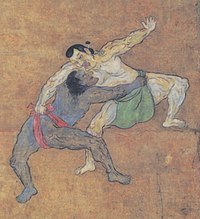
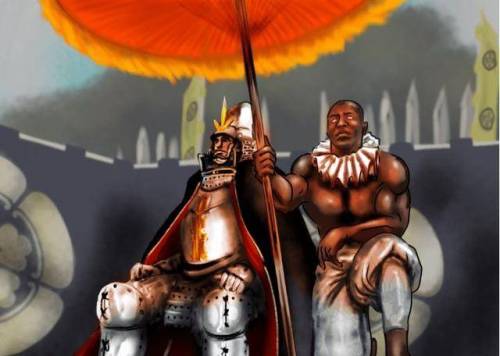
Sean bienvenidos japonistasarqueologos, a una nueva entrega de historia nipona una vez dicho esto pónganse cómodos que empezamos.
-
Hace no mucho salió un nuevo Assassin's Creed Shadows, Yazuke (やすけ) nacido posiblemente en mozambique aunque dependiendo de la fuente lo podéis encontrar que proviene de Madagascar o de otras partes de África no está muy claro su fecha de nacimiento, pero se sabe que existió en el siglo XVI fue un esclavo bajo el amparo de los jesuitas llegando a Japón y cuando Oda Nobunaga, lo vio se quedó impregnado de él mandó lavarlo porque nunca habían visto a un africano.
-
Cabe destacar que a Nobunaga le llamaban el loco, ya que le gustó a la opulencia de última hora en lo que respecta a la moda de la época básicamente lo tendría para fallar mira lo que tengo y tú no tienes. Aquí viene las disputas de sí no fue samurái, las fuentes niponas y la fuente en general de la época hablan de que le dio ciertos cargos posiblemente para llamar la atención y generar cierto revuelo no se sabe muy bien cuando murió.
-
Actualmente, en el país naciente esto está generando un gran revuelo. ¿Qué opinan al respecto?
-
日本の考古学者たちよ、ようこそ、日本史の新連載へ!さあ、くつろいで、始めよう。
-
少し前に、新しいアサシン クリード シャドウズ、ヤズケ(やすけ)おそらくモザンビークで生まれたが、ソースによっては、マダガスカルやアフリカの他の部分から来ているそれを見つけることができますが、彼の生年月日は非常に明確ではないが、それは 16 世紀に存在していたことが知られているイエズス会の保護の下で奴隷だった日本に来るし、織田信長、それを見たとき、彼と孕んでいた彼らはアフリカ人を見たことがないのでそれを洗浄するように命じた。
-
信長が狂人と呼ばれたのは特筆に値する。当時のファッションを見る限り、信長は後世の豪華さを好んでいた。日本側の資料や当時の一般的な資料には、信長が注目を集め、騒ぎを起こすために、信長にある地位を与えたと書かれているが、信長がいつ死んだのかは定かではない。
-
これは現在日本で大きな波紋を呼んでいるが、あなたはどう思うだろうか?
-
Welcome, Japanese archaeologists, to a new installment of Japanese history, so make yourselves comfortable and let's get started.
-
Not long ago came out a new Assassin's Creed Shadows, Yazuke (やすけ) born possibly in mozambique although depending on the source you can find it that comes from Madagascar or other parts of Africa is not very clear his date of birth, but it is known that existed in the sixteenth century was a slave under the protection of the Jesuits coming to Japan and when Oda Nobunaga, saw it was impregnated with him ordered to wash it because they had never seen an African.
-
It is worth noting that Nobunaga was called the madman, as he liked the latter-day opulence as far as the fashion of the time was concerned basically he would have it to fail look what I have and you don't have. Here comes the disputes of yes he was not a samurai, the Japanese sources and the general source of the time talk about him giving him certain positions possibly to draw attention and generate some commotion is not quite sure when he died.
-
This is currently causing quite a stir in Japan, what do you think about it?

Sean bienvenidosfanaticosarqueológicos a una nueva noticia arqueológica del país del sol naciente ¿Dé que trata dicha noticia? Pues a continuación sin más demora os traigo un supernotición del periodo Asuka(592-710).
-
Se han descubierto unos restos arqueológicos que datan del año 650 hace unos 1300 años de antigüedad en la antigua ciudad de Asuka en la prefectura de Nara, para la próxima publicación hablaremos de las prefecturas, aunque sea un resumen.
-
¿Quién ha encontrado estos restos arqueológicos? Fueron encontrados por el Instituto Arqueológico de Kashihara del que ya hablaremos próximamente. ¿Cuál era el uso de este canal? Serviría para desviar el agua que se desbordaba para llenar el estanque que os dejaré una ilustración del mismo.
-
Las piedras tienen un diámetro de 6 metros, las cuales están pavimentadas. Desde luego una gran obra hidráulica para su época. - Os deseo un feliz día y nos vemos en próximas publicaciones un cordial saludo.
-
考古学ファンの皆様、日出ずる国からの新しい考古学ニュースへようこそ。このニュースは何についてのものですか? さて、早速、飛鳥時代(592年~710年)のスーパーニュースをお届けします。
-
古都奈良県の飛鳥市で約1300年前の650年頃の遺跡が発見されたが、次回はまとめではあるが都道府県の話をしたいと思う。 - 誰がこれらの遺跡を発見したのでしょうか? それらは橿原考古学研究所によって発見されました。これについては後ほど説明します。 このチャンネルの用途は何ですか? これは、溢れ出た水を池に流すのに役立ちます。その図を残しておきます。
-
直径6メートルの石が敷き詰められている。 確かに当時としては素晴らしい水圧作業でした。
-
幸せな一日をお祈りいたします。また今後の出版物でお会いしましょう。心からご挨拶申し上げます。
-


Welcome archaeological fans to a new archaeological news from the country of the rising sun. What is this news about? Well, without further delay, I bring you a super news from the Asuka period (592-710).
-
Archaeological remains dating back to the year 650, about 1,300 years ago, have been discovered in the ancient city of Asuka in Nara Prefecture. For the next publication we will talk about the prefectures, even if it is a summary.
-
Who found these archaeological remains? They were found by the Kashihara Archaeological Institute, which we will talk about soon. What was the use of this channel? It would serve to divert the water that was overflowing to fill the pond, which I will leave you with an illustration of.The stones have a diameter of 6 meters, which are paved. Certainly a great hydraulic work for its time.
-
I wish you a happy day and see you in future publications, cordial greetings.
-
 dgfmaurizio liked this · 4 months ago
dgfmaurizio liked this · 4 months ago -
 i-don-world liked this · 4 months ago
i-don-world liked this · 4 months ago -
 dincolos-blog11 reblogged this · 4 months ago
dincolos-blog11 reblogged this · 4 months ago -
 dincolos-blog11 liked this · 4 months ago
dincolos-blog11 liked this · 4 months ago -
 ahmed2567cars liked this · 4 months ago
ahmed2567cars liked this · 4 months ago -
 junian5522 liked this · 4 months ago
junian5522 liked this · 4 months ago -
 vivencias-del-alma liked this · 4 months ago
vivencias-del-alma liked this · 4 months ago -
 enablesomething liked this · 4 months ago
enablesomething liked this · 4 months ago -
 autonomy1 liked this · 4 months ago
autonomy1 liked this · 4 months ago -
 2018full liked this · 4 months ago
2018full liked this · 4 months ago -
 elegantpersoncreation liked this · 4 months ago
elegantpersoncreation liked this · 4 months ago -
 lcc-ldv liked this · 4 months ago
lcc-ldv liked this · 4 months ago -
 ninomeira liked this · 4 months ago
ninomeira liked this · 4 months ago -
 noseysilverfox liked this · 4 months ago
noseysilverfox liked this · 4 months ago -
 hcr-den liked this · 4 months ago
hcr-den liked this · 4 months ago -
 anadolu-42 liked this · 4 months ago
anadolu-42 liked this · 4 months ago -
 slymo07 liked this · 4 months ago
slymo07 liked this · 4 months ago -
 susuz-yolcu liked this · 4 months ago
susuz-yolcu liked this · 4 months ago -
 tuba-u liked this · 4 months ago
tuba-u liked this · 4 months ago -
 misterio-m liked this · 4 months ago
misterio-m liked this · 4 months ago -
 narihira8 liked this · 4 months ago
narihira8 liked this · 4 months ago -
 selin-n liked this · 4 months ago
selin-n liked this · 4 months ago -
 gunduzmetin liked this · 4 months ago
gunduzmetin liked this · 4 months ago -
 ogzd51 liked this · 4 months ago
ogzd51 liked this · 4 months ago -
 nknatteringly liked this · 7 months ago
nknatteringly liked this · 7 months ago -
 emtesirxo liked this · 8 months ago
emtesirxo liked this · 8 months ago -
 kerovousphoto liked this · 9 months ago
kerovousphoto liked this · 9 months ago -
 rodolfo9999 liked this · 10 months ago
rodolfo9999 liked this · 10 months ago -
 rorydbe liked this · 11 months ago
rorydbe liked this · 11 months ago -
 nelc liked this · 1 year ago
nelc liked this · 1 year ago -
 ishiganto liked this · 1 year ago
ishiganto liked this · 1 year ago -
 repera23 liked this · 1 year ago
repera23 liked this · 1 year ago -
 bear-pattern-hamster liked this · 1 year ago
bear-pattern-hamster liked this · 1 year ago -
 vestaignis liked this · 1 year ago
vestaignis liked this · 1 year ago -
 margocooper liked this · 1 year ago
margocooper liked this · 1 year ago -
 adam-trademark liked this · 1 year ago
adam-trademark liked this · 1 year ago -
 babylon-iraq-baghdad liked this · 1 year ago
babylon-iraq-baghdad liked this · 1 year ago -
 yusuf-krk liked this · 1 year ago
yusuf-krk liked this · 1 year ago -
 noticiasarquelogicasjaponesas reblogged this · 1 year ago
noticiasarquelogicasjaponesas reblogged this · 1 year ago -
 hiromusicarts-blog liked this · 1 year ago
hiromusicarts-blog liked this · 1 year ago -
 gkouga liked this · 1 year ago
gkouga liked this · 1 year ago -
 sachik0-1 liked this · 1 year ago
sachik0-1 liked this · 1 year ago -
 masaru-1959 liked this · 1 year ago
masaru-1959 liked this · 1 year ago -
 asiaphotostudio liked this · 1 year ago
asiaphotostudio liked this · 1 year ago

238 posts